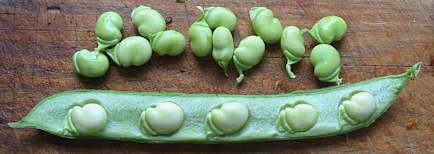Summer Sowing Guide

People often ask us what they should be sowing from June on through the summer.
So, we've tried to list here the main things that we'll be sowing from
midsummer onwards
into the autumn for a good supply of vegetables right through the winter
and into next spring.
Looking after summer sowings
Earlier in summer you will need to make sure that you keep seedlings watered in dry periods. Keep them damp and you'll generally find that June & July sowings get going really fast with the long - and hopefully warm - summer days.
Keep sowing in late summer and autumn, most of these veggies will grow outdoors quite happily outside in most of the country even as the weather turns colder. Any protection you can offer will help for later sowings as autumn comes on - mini plastic and fleece tunnels are an easy modern alternative to traditional cloches. Often just keeping cold winds off your plants is all that is needed to give you a really successful crop.
If you are lucky enough to have a greenhouse or polytunnel, don't let it stand empty once your summer crops are out. Think about bringing on baby plants in modules or outdoor seedbeds to transplant undercover as tomatoes, peppers and cucumbers finish cropping. In a tunnel/greenhouse you can sow (and harvest) salads and greens throughout the year.
Salads and greens
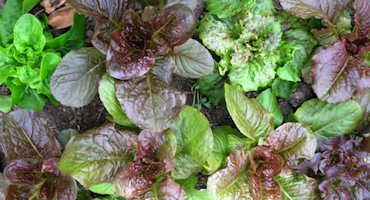 Lettuce
Lettuce
Keep on successional sowing summer lettuce varieties in July -
August to give you a wide range of salads in Autumn.
Winter lettuce are particularly cold-hardy, selected for sowing after mid-summer, for harvest in autumn - and with a bit of protection, on into winter. Ideal if you have a polytunnel and want winter salads - or outdoors under a cloche or mini-tunnel. Try Winter Marvel which can be sown right through into November and then again from late January.
Broccoli/calabrese
Sow our quick heading broccoli outdoors in midsummer for autumn harvest, or as long as the winter is
not too severe, it can be sown in late August or September in an unheated
greenhouse or polytunnel, to give you a very early crop at the start
of the following year.
Broccoli raab or 'rapini'
Broccoli Raab is related to turnip - but is grown like broccoli
& produces delicious sprouts like a slightly spicy flavoured sprouting
broccoli.
Thinnings are also excellent in salads or stirfries. Sow mid to late
summer for harvest just 40 days later - so great in late summer &
autumn when ordinary broccoli isn't available.
Cabbages
Sow spring cabbage in late August or
September, and you'll get nice fresh cabbage very early the following
spring.
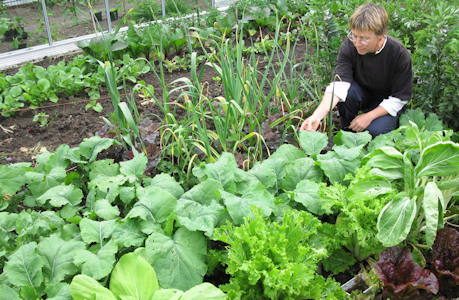 Oriental greens - milder
greens for salads, or tasty mustard
greens
Oriental greens - milder
greens for salads, or tasty mustard
greens
There are a whole range of remarkably cold hardy oriental greens. They
are ideal to keep your plot going through the depths of winter, particularly
jf you don't have the space or time for traditional winter veg like
brussels.
Many are good both in salads and cooked - try Pak Choi, Mizuna, Chinese Cabbage, Mibuna, Tatsoi and Mispoona, all of which can be sown from the end of June through to end September (you can keep on sowing through into the winter if you have a polytunnel or greenhouse)
Mustard greens are even more hardy than the milder greens - which means that they will keep on growing new leaves even in the worst of weather. Raw they are spicy - so although its nice to put small quantities raw in salads, they're mostly used cooked. When you cook them the heat disappears, leaving a rich, full flavour, with just a little spicy zing. They are especially useful because they grow so well in cooler weather.
Salad onions
Salad onions are MUCH easier to grow from seed than normal onions.
They're really quick and useful, providing lots of greenstuff early
in the spring gap when there's not much else available. Sow them after
midsummer for a winter/spring crop
Kale
Kales are great for baby leaves (salads & cooked) in autumn, and
then left to overwinter for delicious greens through to the following
April.
You can sow kale 2 ways:
1) in autumn in a tunnel - for tender baby leaves. We particularly recommend
Nero de Toscana for this use, although all the kales will do well.
2) outdoors before early August - for hardy overwintering plants. Try
Red Ursa for a very good hardy variety that also makes delicious flowering
shoots in spring
Chards and greens
Sow leaf beet and chard up until end July for a seemingly endless supply
of greens in autumn and into next spring.
Winter spinach is excellent for use in salads as well as cooked.
Also try ‘Rapa Senza Testa’ Turnip Greens for an excellect quick growing green vegetable. Ready about 4 weeks from sowing, it makes mild green leaves that have a wonderfully buttery flavour when cooked, and are also nice and mild if used raw in salads.
Other salads
Land Cress (Barbarea verna)
is great in salads but can also be eaten cooked as 'creasy greens' or
as a pretty much identical substitute for watercress in soup. It is
sown in autumn & grown over winter, its a great addition to winter
salads!
Also try 'Bianca Riccia da Taglio'Salad
Endive, which is hardier than lettuce, and has pretty pale green
leaves with a good non-bitter flavour, it can be sown spring, summer
or autumn.
Root and stem vegetables
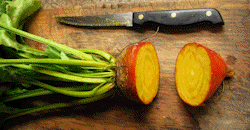 Beetroot
Beetroot
Sow beetroot in June for full sized roots to store. A later sowing in July will be ideal for pulling as tender baby beets in autumn; you can make a further sowing in late August or early September if you are lucky enough to have a polytunnel.
(Store your main crop of beetroot for
winter use by pulling in autumn, twisting off the leaves, and packing
into dry sawdust. Make sure that the roots don't touch, and they should
store through until well into the new year.)
Carrots
Carry on sowing carrots in July and early August to pull as tender carrots
in autumn. We recommend 'Giant
Red' Dark Orange Carrot as the best for summer sowing. The vigour
and flavour of this Italian variety are terrific. The great advantage of late summer sowings is that they are often less affected by carrot fly as the fly is less active in these months.
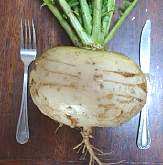 Turnips
Turnips
Sow turnips from mid June through to end July for pulling through the
autumn and into the winter for all those lovely winter stews. Or cook
them as my mum does, braised in the oven and served with a roast leg
of lamb - delicious!
Swedes
Sow swedes from May until late June for harvest in November/December - they will also store well in a cool place until well after Christmas. Excellent as an addition to winter vegetable soups (including the traditional Welsh cawl), roasted around the joint, or mashed with loads of butter and some ground black pepper.
Fennel
Not everyone realises that Fennel is best sown after midsummer as its
much less likely to bolt than if its sown in spring. Sow up to the start
of August. The plants will stand up to Christmas or beyond in milder
areas.
Cooking radishes
These are a fantastic root vegetable that everyone should try. They
bear no resemblance to a breakfast radish, this is a large root - tennis
ball sized and upwards - which you use in soups, stews and stir-fries.
They are also great eaten raw grated or sliced finely into salads, with
a mild zing to them. Try Black Spanish radish which is delicious
in a stir fry, or used like a swede or turnip in soups and stews. We
find them less fussy than either of those two vegetables, and sow them
from July to Sept, for pulling all winter.
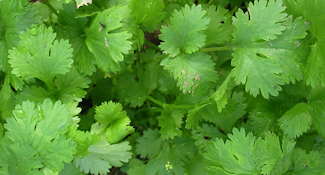 Herbs
Herbs
Successional sow Coriander until the end of July for a continual supply
of fresh leaves, or anytime up to end September in tunnel or greenhouse. Parsley can also be sown up to end July and will stand
through intot he winter with a bit of protection.
Peas and beans
Peas
Sow round seeded varieties in September and October for an extra-early
crop in spring, or from January onwards. Try Glory of Devon as a dwarf variety, or Serpette Guilloteau if you prefer a climbing pea.
Broad beans
Sow broad beans and the hardier field beans from October (the ideal timing will depend on where you live) for an earlier harvest the following year.
